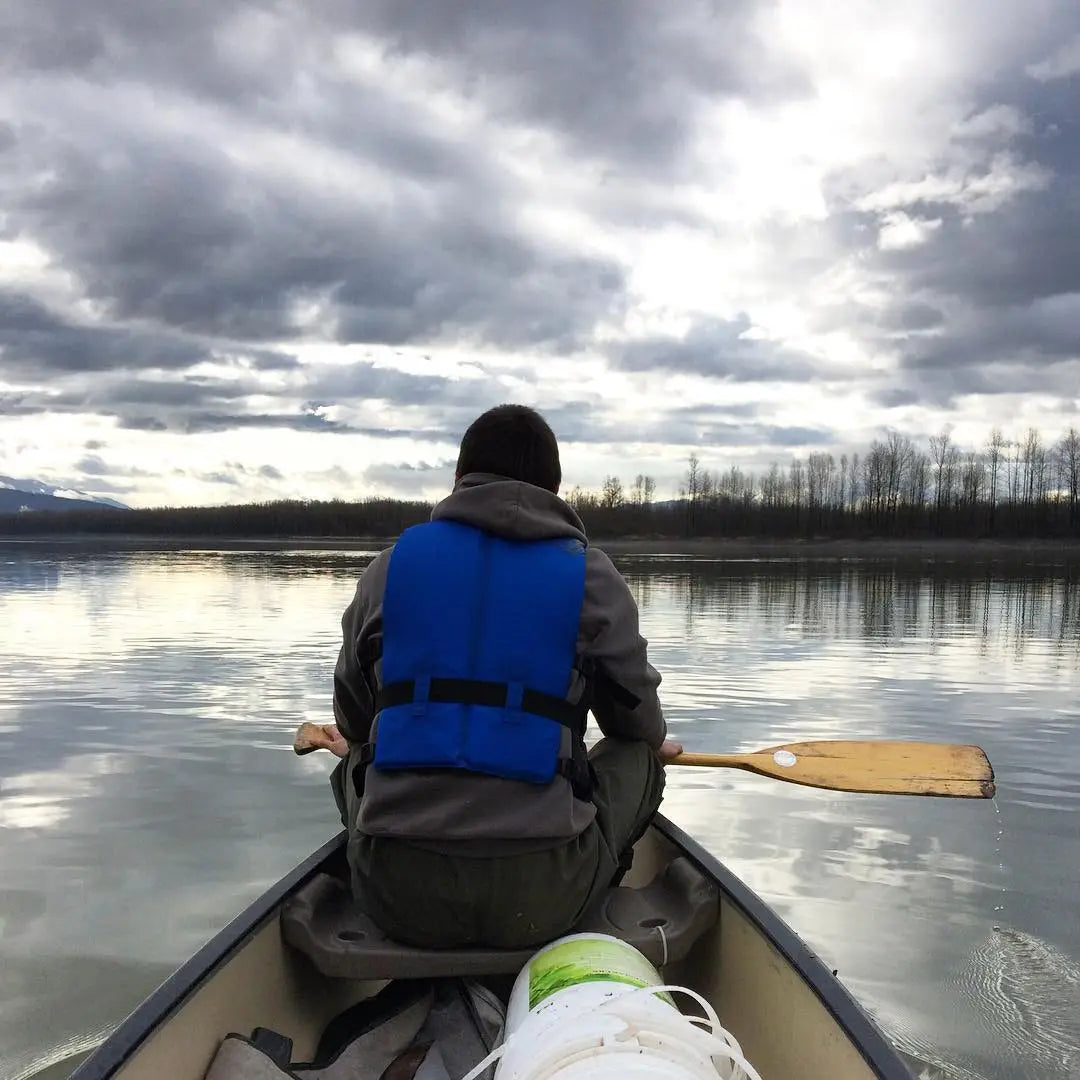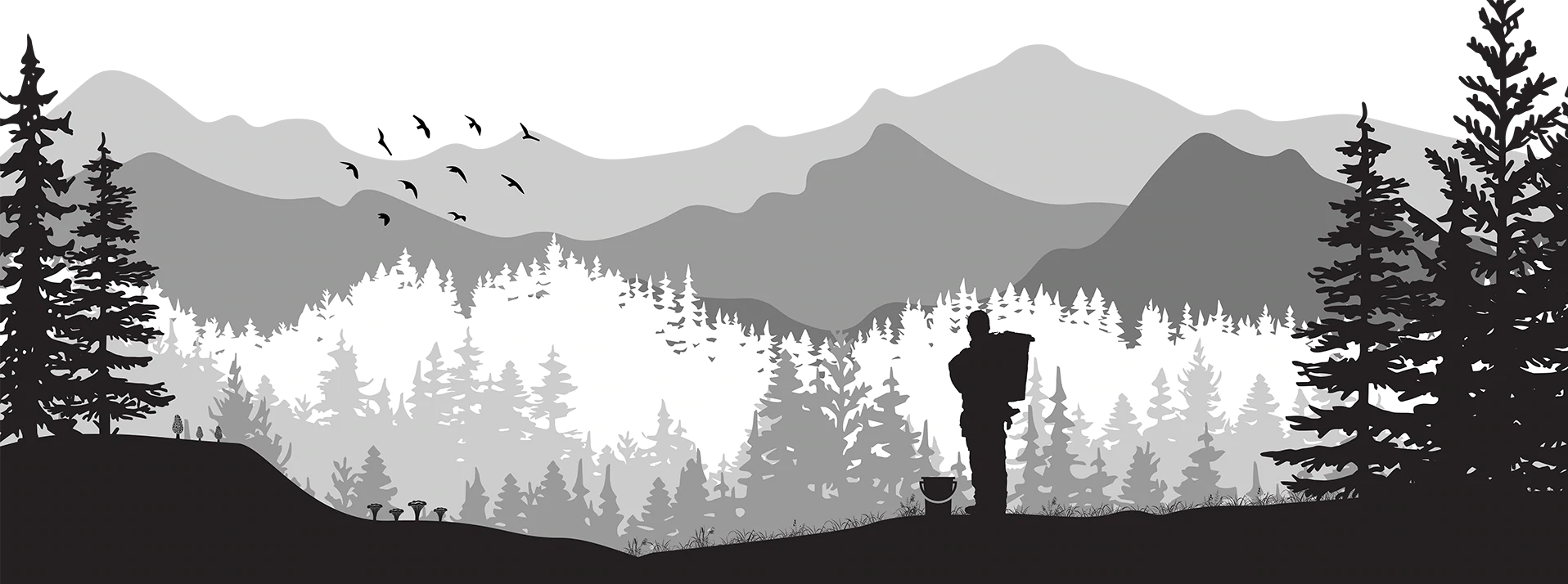Welcome to the first of our “A Day in the Life” snapshots! Over the last 10 years, we have been experiencing the magic and adventure of foraging for wild foods across the Pacific Northwest region, from the Yukon all the way down to northern California. This unique and fascinating job that we have been so lucky to experience is something that only a small number of people in North America ever hear about, let alone take part in! We would like to share with you some of the things that a harvester sees and experiences in a typical day in the bush.
This snapshot is focused on one of our favourite wild greens: B.C. fiddleheads. They are extremely abundant in Eastern Canada and eaten as a springtime favourite, but fiddleheads are also found on the West Coast, although not in the same quantities. This makes the hunt even more enjoyable. B.C. fiddleheads can be quite elusive and are a joy to stumble across after a long hike through blackberry brush and across creeks!

Fiddleheads are the spring shoot of the ostrich fern, easily identified by the distinctive V-shaped groove that runs along the back of the stem. There are many different species of fern growing in the Pacific Northwest, however the ostrich fern is the one type that is revered for its taste and nutritional content. It is very important to properly identify this fern when harvesting, as picking and cooking the wrong fern can lead to an upset stomach and a spoiled meal.

A typical day will see the harvester up at the crack of dawn, eager to get the day started, and depending on the area, he or she may have to paddle across a river or lake to begin the journey! Ostrich ferns flourish in wetlands, floodplains and old riverbeds, often growing in areas that will soon flood as the spring advances.
The main thing to look out for while hunting for fiddleheads is what we call the feathers, which are the fertile fronds remaining from the previous year. This frond is one of the two types that the perennial ostrich fern produces (as opposed to the larger ‘fresh’ fronds that we harvest), and often grows to a height of up to 3 feet off the ground. This distinctive brown frond is the first sign that you’re in a fiddlehead zone.

Fun fact: these fertile fronds resemble the tail feathers of… you guessed it, the ostrich!
Once you’ve found a patch and positively identified the ferns the picking can commence! We always pick in groups of 2 or more, as a second opinion can be extremely helpful in correctly identifying the fern. If you’re not 100% sure, don’t harvest. We advise bringing a 5-gallon bucket or backpack to carry your fiddleheads, pockets and plastic bags won’t do!

When picking fiddleheads, the stem can be easily snapped by gently bending the top of the front back between your forefinger and thumb. The stem will naturally snap about an inch or less from your hand. The golden rule for harvesting fiddleheads is to pick less than half of the fronds from each pod, as this guarantees that the plant will not be damaged, or the growth affected in any way. Ostrich ferns grow prolifically, spreading both through creeping rhizomes and through pollination via the fertile frond. Once they are harvested correctly, ostrich ferns will continue to multiply in number each year.
When you have finished picking for the day, the hike out awaits! Depending on your harvest and the area you’re in, this can be a leisurely stroll along the riverbank or a tough grind through patches of blackberry brush. We like to think that the tougher the hike, the tastier the fiddleheads!

The final part of the day for us involves cleaning our fiddleheads, as they generally have a brown, papery covering that can be tough to remove if you have a large quantity of them. Some people like to remove this husk by running them under cold running water, which can take some time. One way to speed this process up is by soaking them in cold water for the drive home, or for an hour when you get home if you prefer. This will soften up the papery husk and allow you to clean your fiddleheads much faster. To keep them fresh, store them in an airtight container in your fridge. It’s important to note that you should always wash your fiddleheads one more time in the kitchen before cooking! On that note, it is also important to cook fiddleheads by boiling for 15 minutes or steaming for 10-12 minutes, even if you plan to sautée or fry afterwards.
Stay tuned for some amazing recipes and meal inspiration. We hope you enjoy harvesting these amazing wild greens as much as we do. Feel free to reach out with questions or comments.
If you would like to stay updated on our future blogs and new products you can sign up for our newsletter below. Keep it Wild!


